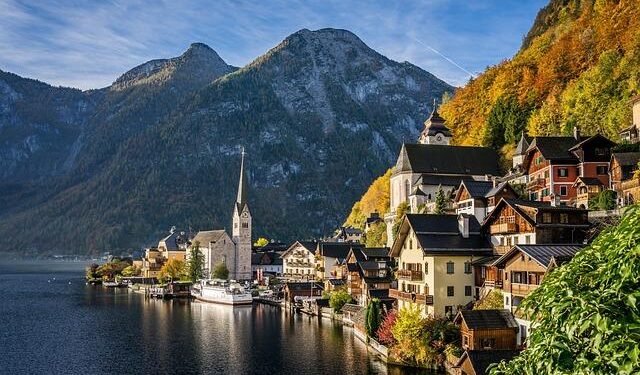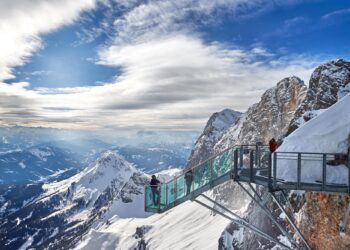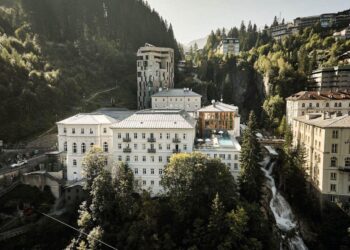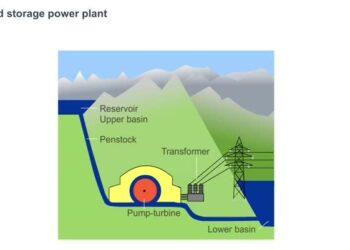The Long Shadow of Austria’s Nazi Past
In the heart of Europe, Austria’s picturesque landscapes and rich cultural heritage often mask a more complex and troubling history. While the country has made strides in reconciling its past since the end of world War II, the legacy of its Nazi affiliation continues to cast a long shadow over contemporary society. This article aims to explore the lingering impact of Austria’s involvement in the Third Reich, examining how historical narratives have evolved and the ongoing struggles with remembrance, accountability, and national identity. As Austria grapples with its role in the atrocities of the Holocaust,the question arises: how does a nation confront the darkest chapters of its past while forging a path toward a more inclusive future? Through a critical analysis of historical events,societal reflections,and current debates,we seek to shed light on the enduring consequences of Austria’s Nazi past and the vital conversations that emerge in its wake.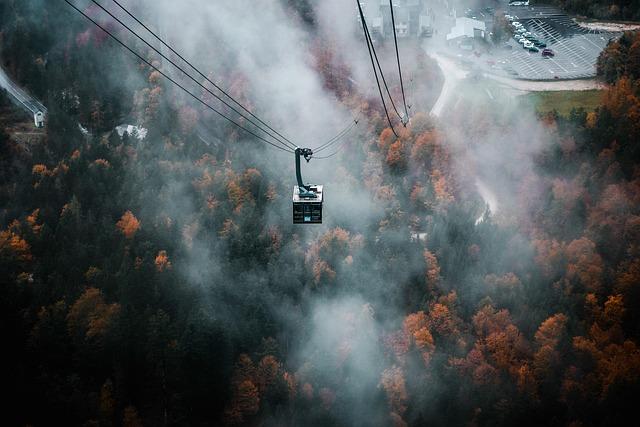
The historical Roots of Austria’s Nazi Affiliations
Austria’s connections to Nazism trace back to the early 20th century,influenced by a mix of nationalism,social unrest,and the fallout of World War I. The collapse of the Austro-Hungarian Empire left a power vacuum that fostered extreme right-wing ideologies, which found fertile ground among the disenfranchised populace. Key factors in this radicalization included:
- The Treaty of Saint-Germain (1919): This treaty officially dissolved the empire, imposing several restrictions on Austria, which fueled resentment and a desire for unification with Germany.
- Nativist nationalism: A strong emphasis on ethnic identity created a culture of exclusion, leading to the rise of extremist groups.
- The Great Depression (1930s): Economic turmoil exacerbated social tensions, pushing manny towards radical solutions.
By the time Austria was annexed by Nazi Germany in 1938—a moment known as the Anschluss—many Austrians were already sympathetic to Hitler’s vision, seeing it as a path to restore national pride and economic stability. Prominent Austrians such as Emil Fey and Arthur Seyss-Inquart played notable roles in facilitating this union. The integration of Austrian Nazis into the broader German regime showcased the deep-seated affiliations within Austria. The following table outlines notable events leading up to the annexation:
| Year | Event |
|---|---|
| 1919 | Treaty of Saint-Germain imposes restrictions on Austria |
| 1926 | Formation of the Austrian Nazi Party |
| 1933 | Establishment of a one-party state in Austria |
| 1938 | Annexation by Nazi Germany (Anschluss) |
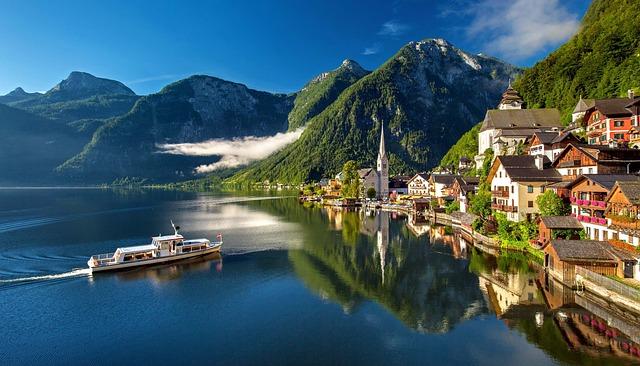
Cultural Memory and the Representation of the Holocaust in Austria
The representation of the Holocaust in austria is a complex tapestry that intertwines memory, identity, and the ongoing struggle to confront the legacy of Nazi atrocities.The cultural memory surrounding this historical period has been shaped considerably by various mediums, including literature, film, and memorials. As Austrians grapple with the reality of their past, public discourse often oscillates between acknowledgment and denial, reflecting a society wrestling with its conscience. Key components influencing this representation include:
- Monuments and Memorials: The establishment of Holocaust memorials serves as a tangible reminder of the past while sparking discussions on societal values and historical consciousness.
- Education: incorporating Holocaust studies within the educational system aims to foster a complete understanding of the atrocities and their implications for contemporary society.
- Literature and Art: Works by Austrian authors and artists contribute to the narrative of collective memory, often focusing on themes of guilt, victimhood, and resistance.
Moreover,the evolution of public sentiment in Austria can be observed through a growing willingness to engage with uncomfortable truths. In the last few decades, there has been an increase in initiatives dedicated to the preservation and promotion of Holocaust memory. These include:
| Initiative | Purpose |
|---|---|
| Holocaust Memorial Day | To honor the victims and encourage reflection on the lessons learned. |
| Educational Workshops | To equip teachers and students with resources for discussing Holocaust history. |
| Documentary Films | To provide visual narratives that detail personal stories of survival and loss. |
Through these efforts, Austria aims to not only preserve the memory of those lost but also to ensure that the horrors of the Holocaust are not forgotten, fostering a culture of remembrance that actively engages future generations in dialog about morality, justice, and humanity.

Contemporary Symbolism: Memorials and Public Perception
The interplay between memorials and public perception in Austria often serves as a reflection of the country’s struggle to come to terms with its Nazi past. Memorials are not merely points of remembrance but complex symbols that evoke various interpretations among the populace. While some view these sites as essential tools for honoring victims and educating future generations about the atrocities of the Holocaust, others perceive them as uncomfortable reminders of a dark history that challenges the national identity. The narratives surrounding these memorials can often polarize communities, as they grapple with feelings of shame, guilt, and the necessity for atonement.
Significantly, the location and design of memorials play crucial roles in shaping their impact on public consciousness. Notable examples include:
- Vienna’s Holocaust Memorial – Situated in the city center, this stark monument forces passersby to confront the realities of persecution.
- Victims of National Socialism Memorial – This politically charged site emphasizes the victims’ stories and invokes discussion about collective memory.
- documentation Center of Austrian Resistance – This center focuses on narratives of resistance,broadening the discourse beyond victimhood to include acts of bravery against repression.
These memorials frequently enough prompt a spectrum of responses—from reverence and mourning to anger and denial—highlighting the ongoing negotiation of Austria’s identity. Delving into this complex relationship reveals how public art can serve as both a site of healing and a flashpoint for societal debate, continuously influencing how history is remembered, understood, and taught in contemporary Austria.

Lessons from the Past: Education and Remembrance Initiatives
Austria’s commitment to educating its citizens about the harrowing chapters of its history is integral to fostering a culture of remembrance and duty. Various initiatives have been launched to explore the implications of Austria’s Nazi past, emphasizing the importance of historical awareness and community involvement.These initiatives include:
- Memorial Education programs: Schools have integrated modules that focus on the holocaust and the atrocities of World war II to ensure that the younger generations understand the consequences of hatred and intolerance.
- Community Dialogues: Local forums are organized where survivors and historians share personal stories, creating a shared space for learning and reflection.
- Art and History Projects: Collaborative artistic programs are used to engage youth in expressing their understanding of history through various art forms, such as theater and visual arts.
In addition to educational measures, the government and numerous organizations actively promote remembrance through memorial sites, exhibitions, and commemorative events. These actions not only honor those who suffered but also serve to challenge contemporary society to reflect on its values. Noteworthy efforts include:
| Initiative | Focus | Impact |
|---|---|---|
| Holocaust memorials | Honoring victims | Raises awareness |
| Recollections Project | Survivor testimonies | Preserves history |
| Intercultural Workshops | Fostering understanding | Encourages dialogue |
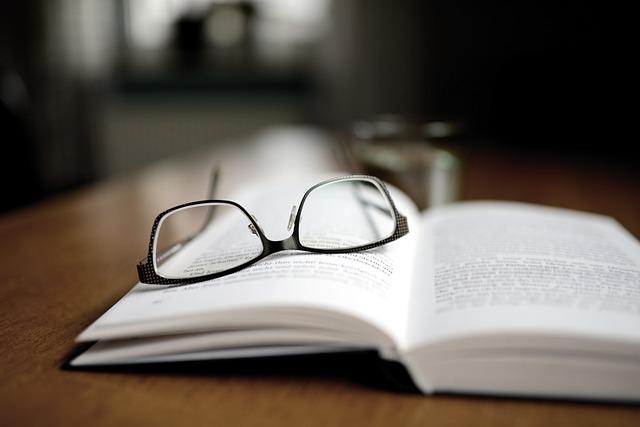
Pathways to reconciliation: Engaging Youth in Dialogue
Engaging the youth in meaningful discussions about Austria’s Nazi past is pivotal for fostering a culture of accountability and understanding. Education plays a vital role, and schools must incorporate comprehensive curricula that detail not only the historical events but also the cultural implications that persist today. Initiatives such as interactive workshops and community forums can serve as platforms where young people can express their thoughts and learn from various perspectives. These gatherings create an habitat where history is not merely memorized but actively debated, helping youth grasp the complexities behind their nation’s legacy.
To enhance engagement, collaborative projects that connect youth with survivors’ stories—through interviews or archival research—can be particularly eye-opening. By participating in these narratives, young Austrians can become personal witnesses to history, fostering empathy and a deeper sense of responsibility. Furthermore, art and digital media can be utilized to express their insights and feelings about the past, enabling a new generation to communicate the weight of history in a format that resonates with them.Below is a simple table showcasing potential activities that could facilitate youth engagement:
| Activity | Description |
|---|---|
| History Workshops | Interactive sessions focusing on critical events in Austria’s Nazi past. |
| Survivor Interviews | Connecting youth with survivors to share personal testimonies. |
| Art Installations | Creating visual representations of historical narratives. |
| Digital Storytelling | Utilizing platforms to share insights in engaging formats. |
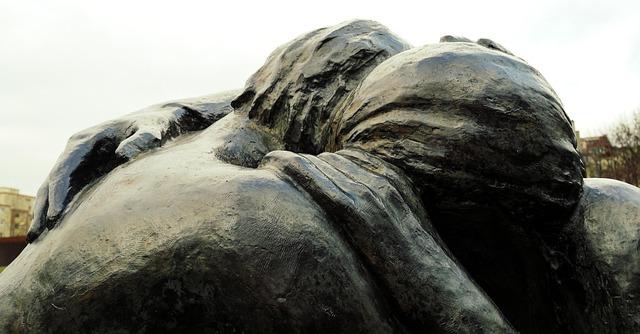
Challenges Ahead: addressing Modern Extremism in Austrian Society
The recent resurgence of extremist ideologies in Austria highlights a pressing need for a robust response to modern threats. Factors contributing to this phenomenon include socioeconomic disparities, political polarization, and cultural anxieties that are exploited by far-right factions. These groups have become increasingly adept at using social media platforms to spread their messages, finding fertile ground among citizens disillusioned by the mainstream political narrative. As Austria wrestles with its historical legacy, it must also confront how historical grievances and memories are utilized by contemporary populists to justify exclusionary policies.
To combat extremism effectively, the following strategies should be considered:
- Education and Awareness: promoting historical literacy about Austria’s Nazi past to foster a culture of understanding and tolerance.
- Community Engagement: building bridges between communities to address underlying tensions and foster dialogue.
- Policy Reformation: Reviewing and amending laws protecting against hate speech while ensuring free expression is respected.
| Key Areas of focus | Initiatives |
|---|---|
| education | Historical curriculum updates |
| Community Programs | Inter-faith dialogues and cultural events |
| Policy | stricter regulations on hate groups |

To Conclude
As Austria grapples with its historical legacy, the long shadow of its Nazi past continues to shape contemporary society and politics. The lingering effects of this dark chapter have ignited debates on national identity, historical accountability, and the complexities of remembrance.While Austria has made strides in confronting its past, the road to reconciliation remains fraught with challenges.Initiatives to educate future generations, coupled with a critical examination of historical narratives, are essential for fostering a more nuanced understanding of Austria’s role during World War II and the Holocaust. The journey of reckoning is ongoing, and as Austria navigates these intricate discussions, it must do so with an unwavering commitment to truth and a collective responsibility to ensure that the lessons of history are never forgotten. In reflecting on the past, Austria has the opportunity to build a more inclusive and resilient future, one that honors the memory of those who suffered and reinforces the values of tolerance and democracy for generations to come.


